One of only three surviving examples of its kind.
August Horch was one of the pioneers of the automobile industry in Europe. He joined Benz & Cie in 1886, just one year after the company introduced its first working automobile. For the next three years, he supervised automobile production, but eventually found a backer and left Benz to start his own company, A. Horch & Cie. in 1899.
A talented engineer, his first new car – introduced in 1901 – featured a number of advances, including a carburetor with spray jets and a constant-mesh sliding gear transmission. Despite financial troubles, the company grew and its products developed an enviable reputation in the marketplace. Unfortunately, August found himself in a dispute with the company’s shareholders over engineering issues, and as a result he left the company. Shortly thereafter, he formed a new company and began marketing a newly designed car – also called Horch! After a lengthy legal battle, the courts ordered him to change the name of his new company and its cars. Since the German word for Horch is a form of the verb “to listen”, he named his new car and company using the equivalent latin verb, “Audi”. Meanwhile, after the war, Horch hired Paul Daimler away from his father’s firm. Daimler set about designing Germany’s first eight-cylinder automobile engine – a twin cam inline design that formed the basis for the 305 model, introduced in 1927.
In 1930, Horch introduced another completely new model, the 450. Featuring a 4.5 liter overhead valve inline eight-cylinder engine, very few were made.
By 1932, Germany was enveloped in economic chaos, and as a result four leading automakers – Audi, DKW, Horch, and Wanderer – joined forces to become Auto-Union. Finally, August Horch was reunited with his original company, and made the head of Horch, and given a seat on the board of Auto-Union. In 1934, the new 850 was introduced. The engine was similar to the 450, but increased to five liter capacity. The 851 and 853 followed; the latter employed double jointed rear axle shafts pioneered on the Auto-Union racecars, providing fully independent de Dion-type rear suspension. Front suspension layout was unusual, featuring an upper “A” arm, with the lower hub carried by a pair of transverse leaf springs. Vacuum assisted hydraulic brakes were standard, as was a four-speed transmission with a lever-actuated overdrive that was usable in all four gears. The result was a highly advanced chassis for its time, and one that would not be matched by most other carmakers until well into the postwar period.
The Special Roadsters
In early 1935, Horch began to consider the construction of a sporting car along the lines of the Special Roadsters being offered by Mercedes-Benz. Accordingly, a wooden model was constructed to assess the design concept; in due course a decision was made to build a car to the model. Construction was undertaken by the factory coachworks in Meerane, Germany. Although the car was shown briefly, it was initially not sold as consideration was being given to modifying the car with the addition of a supercharger. Ultimately, it was decided that the factory inline eight engine was sufficient, and plans for supercharging were abandoned.
In the meantime, a second car was built to the wooden model, similar to the first car, this time by Erdmann & Rossi, a prominent German coachbuilder.
These first two cars may be considered the “first series” cars, in that they closely resemble the wooden model, and are virtually identical to each other. Both survive, one in Texas (Dr. Charles Key) and one in Germany (Horst Lautenschlager).
A subsequent series of cars were built (the “second series” cars) which differed from the first in several respects. The coachwork was more modern, and featured pontoon shaped fenders and a one piece rear body (no separate fenders).
Five of these cars were built, three of which are known to survive today. The first example was built for Nazi Herman Goering; it was the only one built to bulletproof standards. At the same time, Mercedes-Benz was building a 540K Special Roadster for Goering. When both cars were completed, Goering chose the Mercedes-Benz, primarily because it featured bulletproof doors and door glass, while the Horch featured only a bulletproof windshield. This first Horch 853 Special Roadster was ordered to be dismantled, although parts of the car were used in the subsequent four Special Roadsters.
A second car remains unaccounted for, while the three surviving cars include two currently residing in Europe, and the example presented here, the Cassini car.
The Cassini car’s prewar history remains unknown, but it was imported to the U.S. in the late 1940s by a returning serviceman who subsequently opened a filling station in the Cleveland, Ohio area. He began to partly disassemble the car with the intention of restoring it, but never completed the project.
In 1969 or early 1970, collector Herbert Von Fragstein was searching for a Horch Special Roadster, and learned of this car. He visited the owner, but was unable to persuade him to part with the car. He never forgot the car, and called or wrote every few months in an attempt to buy the car. Finally, in 1973, he was successful.
Von Fragstein also intended to restore the car, and began collecting parts, seeking to upgrade parts that had deteriorated with better ones. For almost 30 years, he searched the world for parts, amassing a remarkable collection. Finally, in 2001 he realized that he would never undertake the full restoration, and made the decision to sell the car.
Joseph C. Cassini III had been looking for an interesting car to restore, and a deal was reached for Cassini to buy the car from Von Fragstein, via RM Classic Cars in Chatham, Ontario.
Although the Cassini car is one of the three surviving examples (of the five built), each car is different. Some have the “sweep panel” in the body sides; at least two were built with the beautiful louvred rear fender skirts, while others had no skirts at all. At least two cars had the blade style bumpers seen on the Cassini car, while others had traditional Horch 853 style bumpers. Similarly, at least three different interior patterns exist; all of this is documented in original photographs, many of which are found in Rupert Stuhlemmer’s book The Coachwork of Erdmann & Rossi.
The final special roadster built is different from its predecessors, and is considered by some to represent the sole example constructed of a “third series” of cars. Called an 855, it was built on a shorter wheelbase (3,300mm) chassis and returned to separate rear fenders like the first series cars. It is owned today by Rudy Klein, but was restored by Audi, where it is on long term loan to the factory collection.
Thus we can see that the Cassini car is one of three surviving second series cars, and one of six survivors of all types.
The Restoration
Almost immediately, the restoration began with a thorough inventory and dismantling of the car. Although shabby in appearance, the car proved to be remarkably complete. Nonetheless, the decision was made that, given the rarity and importance of the car, it would be taken back to its very foundation, and completely rebuilt.
As a result, although most of the original wood framework survives, every joint was carefully taken apart, cleaned, and refastened. Where wood rot had appeared (primarily in the forward portions of the body sills), new pieces were fabricated in the exact manner of the originals and carefully installed. While the sheet metal was complete, previous repairs to the front fenders were poorly done. As a result, although much of the original sheet metal was saved, substantial new fabrication was required. The frame was in excellent condition, and required little more than a thorough cleaning and repainting. Similarly, the original chassis components were rebuilt and reinstalled, including suspension, steering, and the unique hydraulic jacking mechanism.
The drivetrain was also complete, but every component required both mechanical rebuilding and cosmetic refurbishing. An intensive program of research was undertaken to ensure that each detail was faithful to the original materials and finish. To this end, two separate trips to Germany were made in order to photograph other original cars.
The interior trim and upholstery is identical in form and pattern to the originals. The woodwork was carefully re-veneered and properly refinished, and the top and upholstery were painstakingly cut and fitted to match the original patterns.
Each instrument was restored, and a new wiring harness was fabricated for the complete car. Each light, bezel, and lens was carefully rebuilt and reinstalled.
Hundreds of hours were dedicated to careful blocksanding and preparation for painting. The finish – a correct shade of silver accented with a subtle grey two-tone – was color sanded and buffed to provide a superior shine and quality finish.
Any Horch is a rare and delightful thing today. The startling beauty and underlying engineering excellence of the special roadsters makes them the crowning achievement of the company. That only six survive – and only three of this series – makes them all the more desirable.
The restoration of an automobile of this caliber and historical importance is almost a sacred trust. It is important not only to restore the car to new condition mechanically and operationally, but also to ensure that the visual beauty of the original design is carefully restored. Horch was one of the great marques of prewar Europe, and one deserving of the finest materials, finishes, and detailing. As the owner, Joseph C. Cassini III, never wavered in his commitment to see the project through to completion, always encouraging the staff at RM Auto Restoration to do their utmost to ensure that the result would be historically accurate, mechanically perfect, and visually breathtaking. RM
_01.jpg)
_02.jpg)
_03.jpg)
_04.jpg)
_05.jpg)
_06.jpg)
_07.jpg)
_08.jpg)
_09.jpg)
_10.jpg)
_11.jpg)
_12.jpg)
_13.jpg)
_14.jpg)
_15.jpg)
_16.jpg)
_17.jpg)
_18.jpg)
_19.jpg)
_20.jpg)
_21.jpg)
_22.jpg)
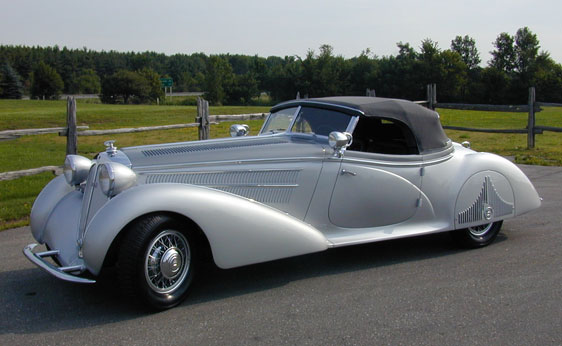

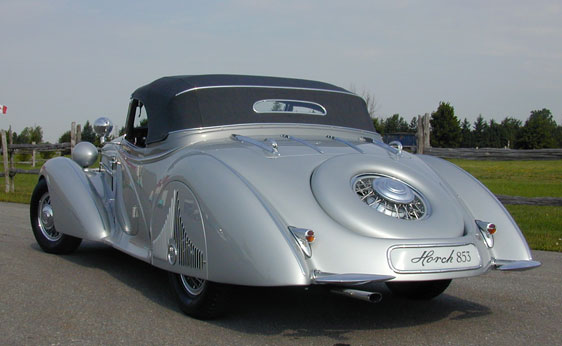

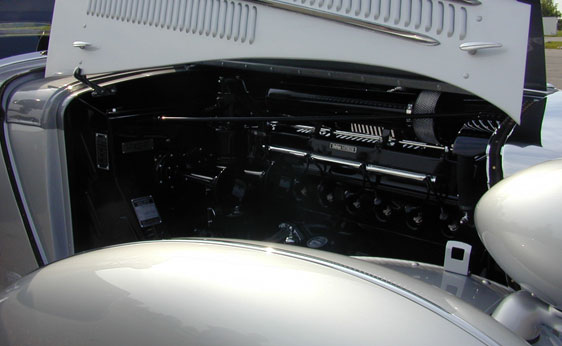

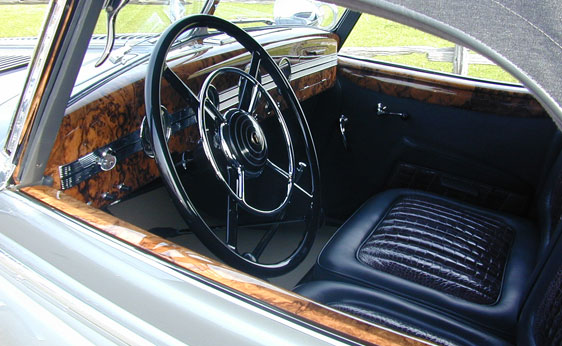

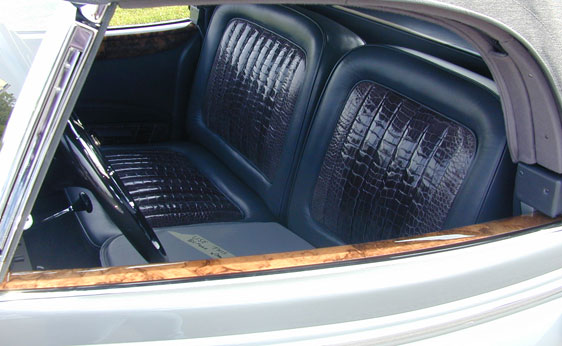

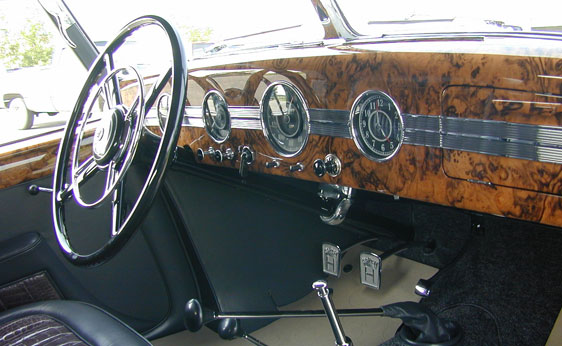

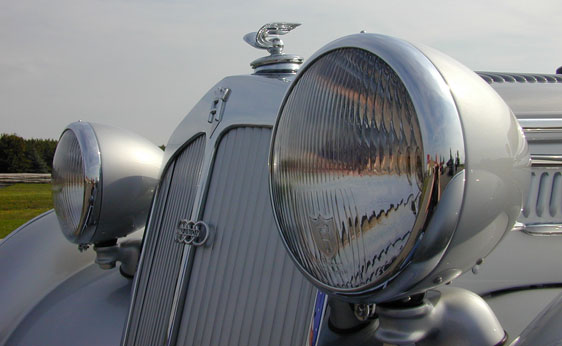

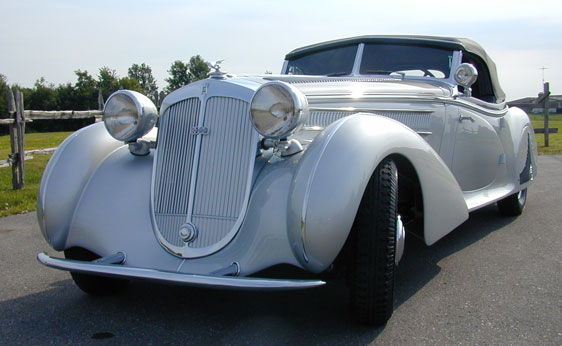



_01.jpg)
_02.jpg)
_03.jpg)
_04.jpg)
_05.jpg)
_06.jpg)
_07.jpg)
_08.jpg)
_09.jpg)
_10.jpg)
_11.jpg)
_12.jpg)
_13.jpg)
_14.jpg)
_15.jpg)
_16.jpg)
_17.jpg)
_18.jpg)
_19.jpg)
_20.jpg)
_21.jpg)
_22.jpg)

















